 1995 BMW M3 (E36) Dimensions, Size & Specs
1995 BMW M3 (E36) Dimensions, Size & SpecsMeasurements of the 1995 BMW M3, engineered for optimal performance and comfort
| Dimensions | |
|---|---|
| Length: | 4433 mm174.5 in14.5 ft |
| Width: | 1699 mm66.9 in5.6 ft |
| Height: | 1365 mm53.7 in4.5 ft |
| Weight Specifications | |
| Curb Weight: | 1460 kg3219 lbs |
| Maximal permitted Weight: | 1950 kg4299 lbs |
| Roof Load: | 75 kg165 lbs |
| Tire Specifications | |
| Rims Sizes: | 17-inch rims:
|
| Tire Sizes: |
|
The BMW M3 E36 generation, produced from 1994 to 1998, represents a highly acclaimed chapter in the legacy of BMW's iconic M3 sports sedan. This model year 1995 BMW M3 E36 sedan is characterized by its refined balance of performance and everyday usability. It features a length ranging from 4432 to 4433 mm (174.5 to 174.6 inches), a width between 1696 and 1699 mm (66.7 to 66.8 inches), and a height of approximately 1364 to 1365 mm (53.7 to 53.7 inches), making it a compact yet sporty sedan ideal for both spirited driving and comfortable commuting.
Weighing in with a curb weight of 1460 kg (3221 lbs), the M3 E36 maintains agility without sacrificing stability or comfort. Its maximum weight capacity reaches 1950 kg (4299 lbs), which ensures sufficient load capability including passengers and luggage. A noteworthy aspect of the M3 E36 is its roof load limit of 75 kg (165 lbs), providing additional utility for rooftop carriers or accessories.
The sedan rides on distinctive alloy rims sized 8.5J x 17 for the front and 7.5J x 17 for the rear, wrapped in performance-oriented tires: 245/40 R17 on the front, and either 225/45 R17 or 235/40 R17 on the rear, offering a balanced grip and driving precision. This rim and tire configuration underscores the M3 E36’s sporty handling and responsiveness.
Together, the dimensions and specifications of the BMW M3 E36 reflect a well-engineered sports sedan, delivering a harmonious blend of moderate size, dynamic performance, and practical weight - making it a timeless choice for enthusiasts seeking a compact sports vehicle with everyday usability.
Discover the standout features that make the 1995 BMW M3 a leader in its class
Have a question? Please check our knowledgebase first.
The BMW M3 (E36) sedan produced from 1994 to 1998 has a length ranging from 4432 to 4433 mm (174.6 to 174.7 inches), a width between 1696 and 1699 mm (66.7 to 66.8 inches), and a height from 1364 to 1365 mm (53.7 to 53.7 inches). These dimensions characterize it as a compact sports sedan with balanced proportions, optimized for agile handling and stability while maintaining drivability and comfort in urban and highway environments.
The BMW M3 (E36) features a width of approximately 1696 to 1699 mm (66.7 to 66.8 inches), which places it on the narrower side compared to many mid-size sedans of the mid-1990s. This modest width was purposeful to enhance the car's nimbleness and cornering precision, contributing to its reputation as a highly capable sports sedan. In contrast, many competitors had widths closer to or exceeding 1800 mm (70.9 inches), often prioritizing interior space over agility.
The curb weight of the BMW M3 (E36) is approximately 1460 kg (about 3219 lbs). This relatively lightweight body for a performance sedan allows for brisk acceleration, responsive handling, and efficient braking. The balanced weight paired with a powerful inline-six engine contributes to a dynamic driving experience. The weight also influences fuel economy and suspension tuning, balancing sportiness with daily usability.
The BMW M3 (E36) sedan stands at around 1364 to 1365 mm tall (approximately 53.7 inches). This relatively low height helps to reduce aerodynamic drag and improve high-speed stability, key factors in a sports-oriented vehicle. Additionally, the lower roofline gives the car a sleek profile that enhances its sporty aesthetics. While the lower height may slightly reduce headroom compared to taller sedans, the design balances visibility adequately for driver confidence and comfort.
Yes, the BMW M3 (E36), with its length of about 4.43 meters (174.6 inches) and width near 1.7 meters (66.7 inches), fits comfortably within most standard residential garage dimensions. Typical single-car garages have widths of about 2.4 to 2.7 meters (7.9 to 8.9 feet) and lengths around 4.8 to 6 meters (15.7 to 19.7 feet), providing ample space for the vehicle and additional clearance for opening doors and storage. This makes it practical for daily use and secure storage without requiring special accommodations.
The BMW M3 (E36) uses rims sized 8.5J x 17 for the front and 7.5J x 17 for the rear, supporting tire sizes such as 245/40 R17, 225/45 R17, and 235/40 R17. This staggered setup helps enhance grip and handling, with wider tires improving traction during acceleration and cornering. The choice of 17-inch wheels maintains a balance between handling performance and ride comfort, while the tire profiles and widths are optimized for the car's suspension and power output, contributing to its reputation as a driver-focused sports sedan.
Compared to the E30 M3, the E36 M3 is larger in most dimensions. The E36 measures about 4432–4433 mm in length (174.6–174.7 inches) versus the E30's roughly 4330 mm (170.5 inches), making it approximately 10 cm longer. Width also increased from around 1650 mm (65 inches) to about 1696–1699 mm (66.7–66.8 inches). The height remained fairly consistent. This dimensional growth provided more interior space and improved high-speed stability while retaining agility. The E36's increased curb weight, approximately 1460 kg versus the E30's roughly 1270 kg, reflects added features and structural rigidity, indicating a leap toward modern sports sedan design without sacrificing performance.
In comparison to similar mid-1990s sports sedans like the Mercedes-Benz C36 AMG and Audi S4 of that era, the BMW M3 (E36) is slightly more compact with its length around 4433 mm (174.7 inches) and width near 1699 mm (66.8 inches). While rivals sometimes offered slightly larger cabin space, the E36 M3 was celebrated for its sharp handling and sporty chassis setup. Its 1460 kg curb weight was competitive, favoring agility over bulkier competitors. Performance-wise, the E36 M3's naturally aspirated inline-six engine provided a rewarding balance of power, smoothness, and responsiveness that appealed to enthusiasts seeking spirited driving dynamics.
The BMW M3 (E36) has a maximum permissible weight of approximately 1950 kg (about 4299 lbs), which includes the vehicle's curb weight, passengers, cargo, and fuel. Additionally, it supports a roof load capacity of 75 kg (approximately 165 lbs). These weight limits ensure safe operation under varying load conditions without compromising handling, braking, or structural integrity. Adhering to these limits is key to maintaining the vehicle's performance and safety standards.
Despite being a compact sports sedan, the BMW M3 (E36) offers practical interior space for four passengers, though rear seating is best suited for shorter journeys or smaller passengers due to the coupe-like roofline and slightly limited rear headroom. Its width of about 1697 mm (66.8 inches) allows for decent shoulder room. Compared to some larger competitors, the E36 may feel a bit tighter inside, but it strikes a good balance between sporty proportions and everyday usability. The sedan design also benefits from a usable trunk space, making it more versatile than two-door M3 variants for daily driving and light luggage.
Discover similar sized cars.
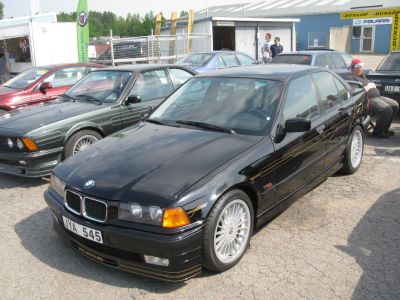
| Production: | 1993-1998 |
|---|---|
| Model Year: | 1995 |
| Length: | 4433 mm174.5 in |
| Width: | 1698-1710 mm66.9-67.3 in |
| Height: | 1346-1373 mm53.0-54.1 in |
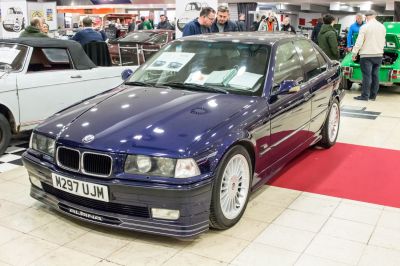
| Production: | 1993-1999 |
|---|---|
| Model Year: | 1993 |
| Length: | 4433 mm174.5 in |
| Width: | 1698 mm66.9 in |
| Height: | 1373 mm54.1 in |
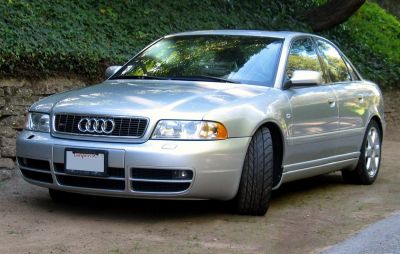
| Production: | 1997-2001 |
|---|---|
| Model Year: | 1998 |
| Length: | 4483 mm176.5 in |
| Width: | 1733 mm68.2 in |
| Height: | 1396 mm55.0 in |
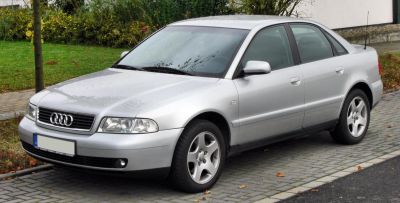
| Production: | 1999-2000 |
|---|---|
| Model Year: | 1999 |
| Length: | 4479 mm176.3 in |
| Width: | 1733 mm68.2 in |
| Height: | 1418 mm55.8 in |
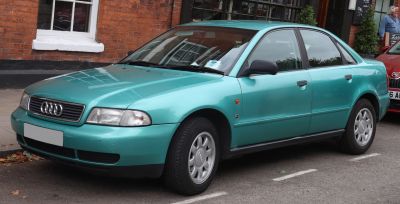
| Production: | 1994-1999 |
|---|---|
| Model Year: | 1995 |
| Length: | 4479 mm176.3 in |
| Width: | 1733 mm68.2 in |
| Height: | 1415 mm55.7 in |
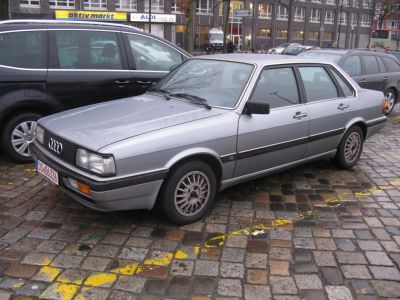
| Production: | 1984-1987 |
|---|---|
| Model Year: | 1984 |
| Length: | 4465 mm175.8 in |
| Width: | 1682 mm66.2 in |
| Height: | 1365-1376 mm53.7-54.2 in |
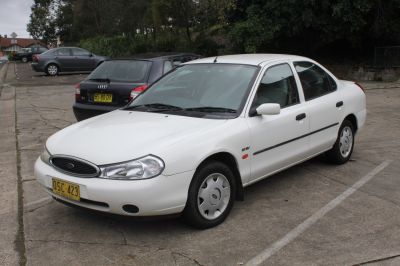
| Production: | 1995-2001 |
|---|---|
| Model Year: | 1996 |
| Length: | 4480-4556 mm176.4-179.4 in |
| Width: | 1751 mm68.9 in |
| Height: | 1424-1430 mm56.1-56.3 in |
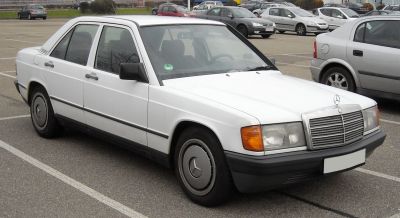
| Production: | 1982-1988 |
|---|---|
| Model Year: | 1982 |
| Length: | 4420-4450 mm174.0-175.2 in |
| Width: | 1678-1706 mm66.1-67.2 in |
| Height: | 1338-1390 mm52.7-54.7 in |
